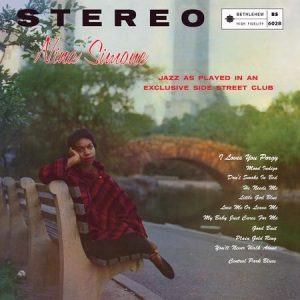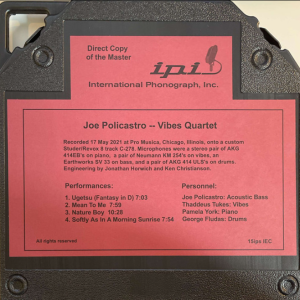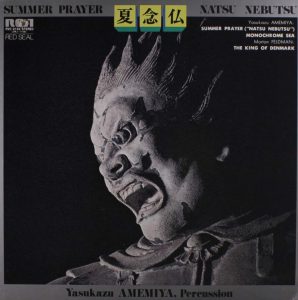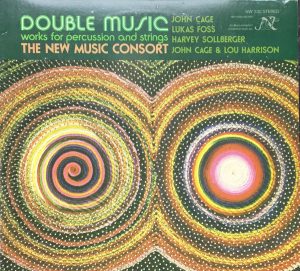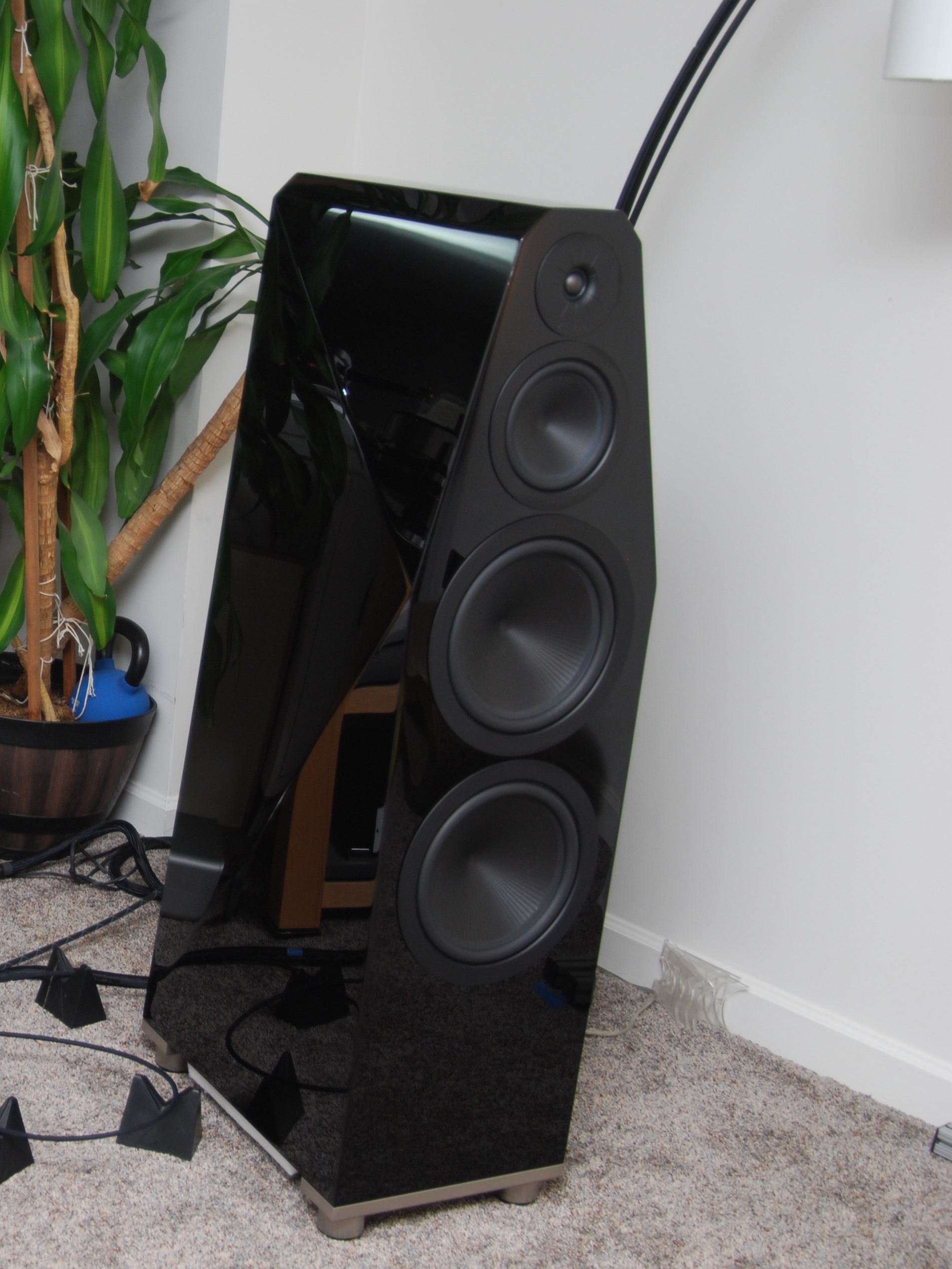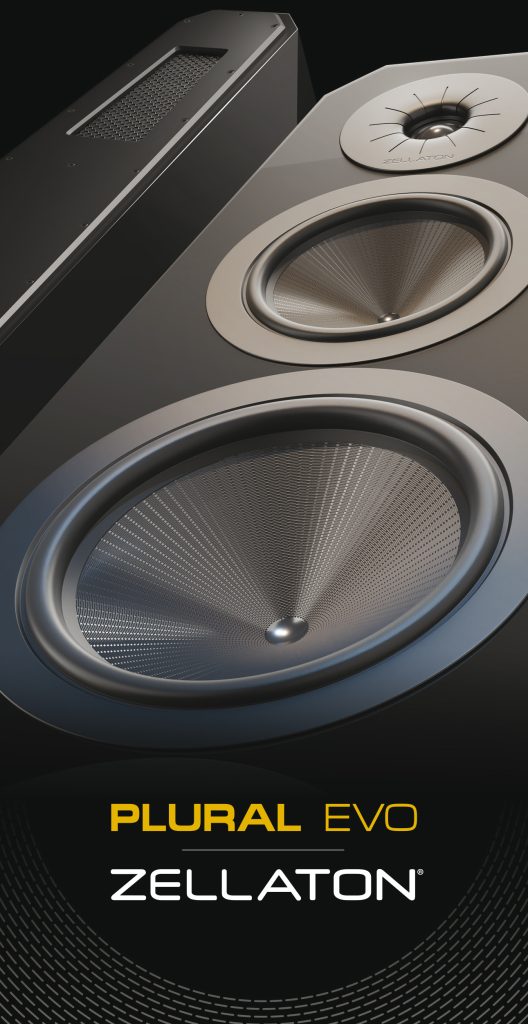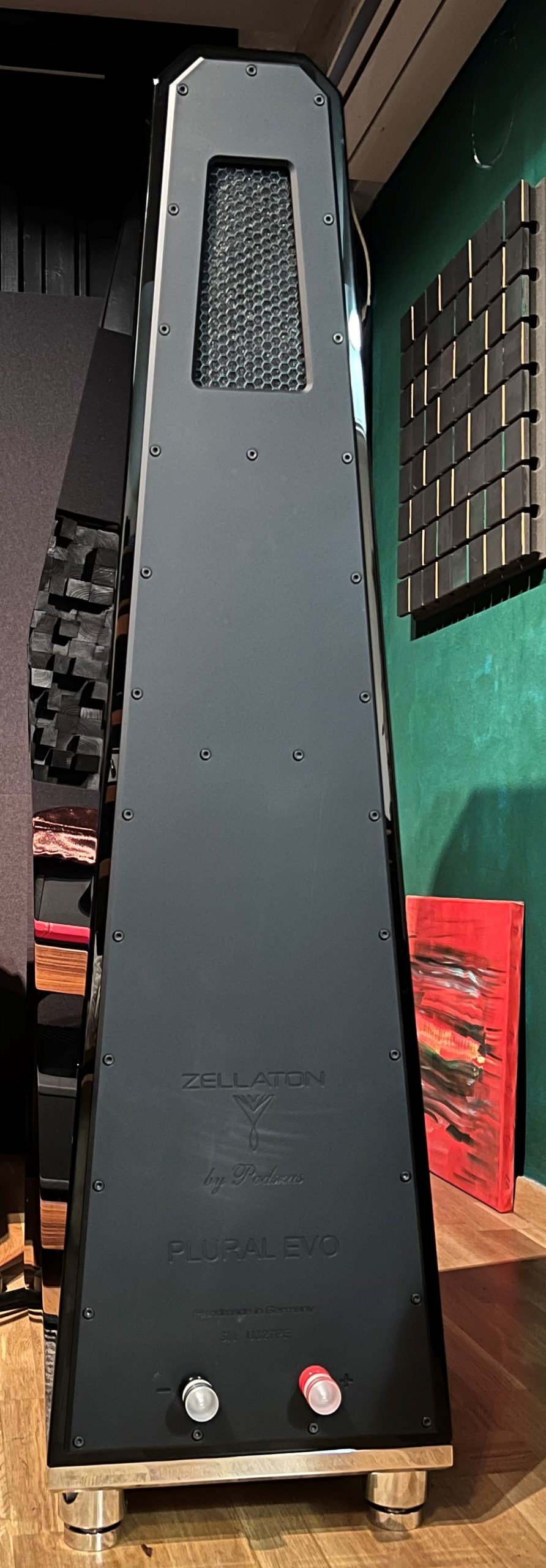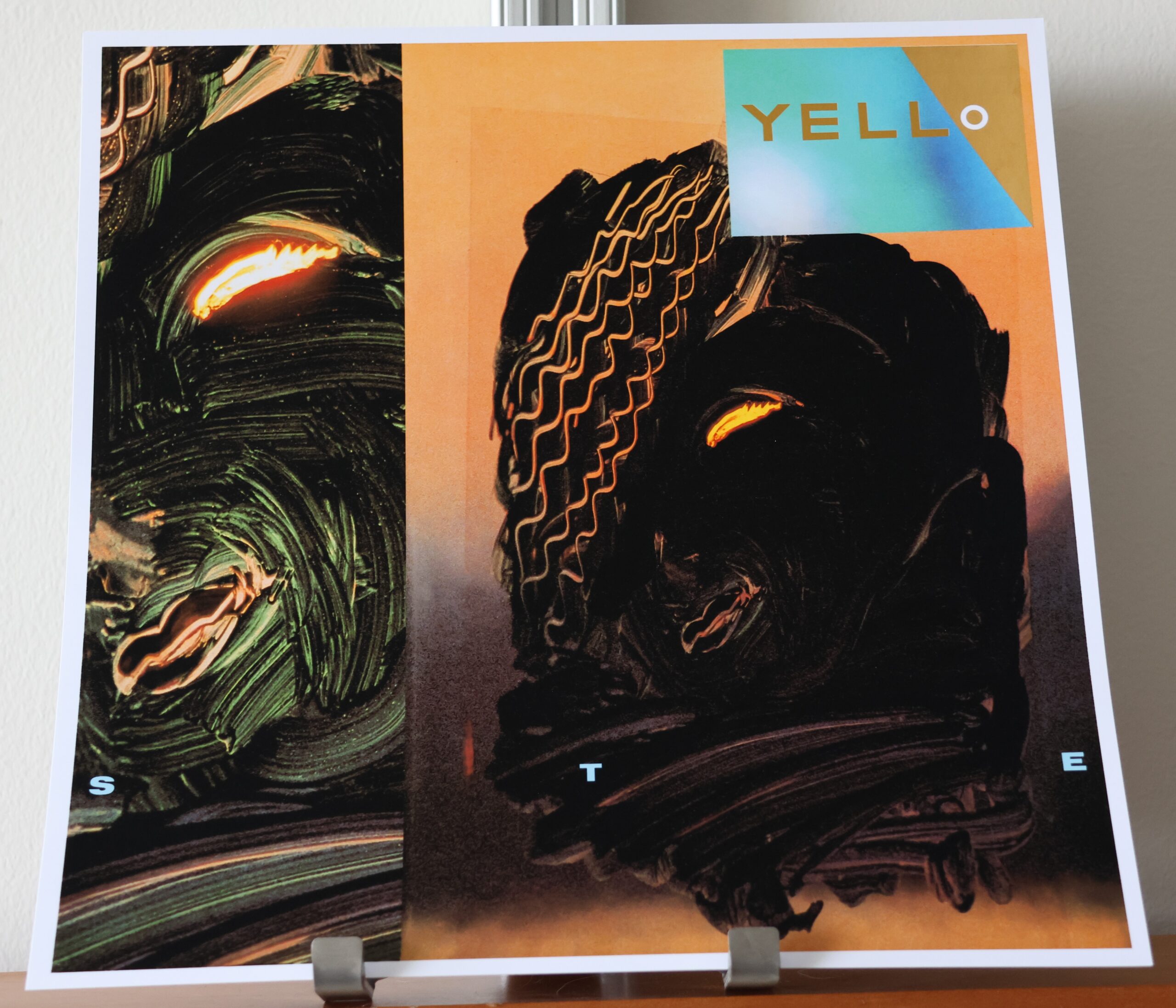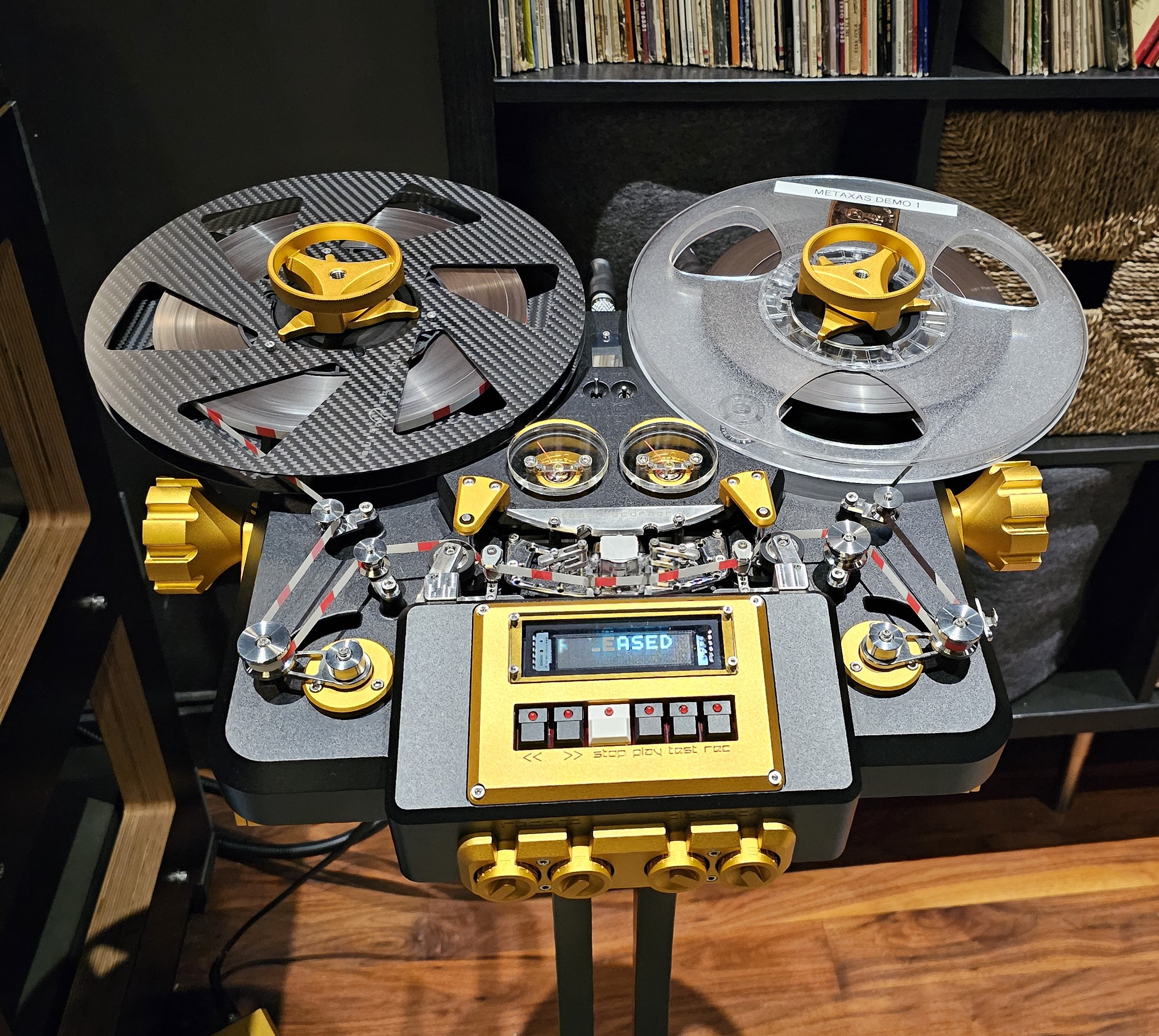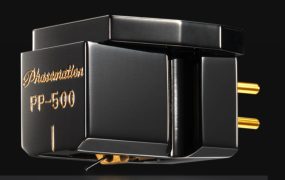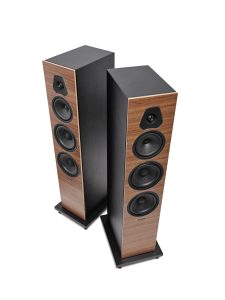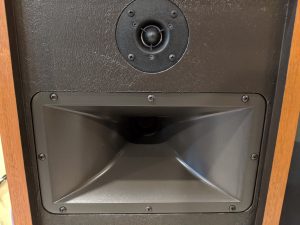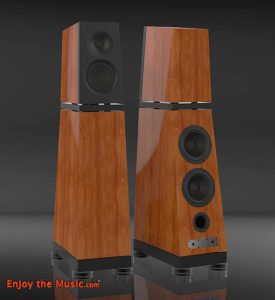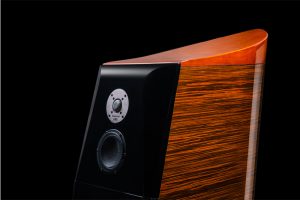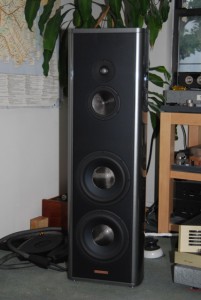Far too much time has passed since my last Positive Feedback review. This unintentional hiatus was traceable to the Covid-19 pandemic (and resulting work changes) coupled with an unexpected move to new digs early this year. For the record. Heidi and I weren't in the market for a new place but pandemic pricing on Manhattan apartments proved too good a deal to pass up. We began looking at apartments in early December 2020 and two months had found on a roomy two bedroom/two bath apartment on the 17th floor with a stunning view of the East River and RFK Bridge (especially at night!). Then came the task of getting estimates for packing and moving the audio system, records and tapes. (That ended up being around 70 or 80 recyclable plastic crates.) Our personal items too. Oh yes. Moving three beautiful kittens including two Ragdolls and one Bengal! Heidi and I ended up hiring two movers: one for the audio system and a second for the rest of our personal items. Talk about crazy audiophiles! And the system took much longer to reconstitute despite my most realistic estimates. It's easy to forget the days, weeks, months and years spent optimizing, tuning and tweaking our systems! That point transcending that chasm—however momentarily—between reproduced and live music. Especially capturing that last 20% or so of performance that differentiates good from great systems. Don't mistake that, though, to mean that my listening has ground to a screeching halt. Quite the opposite, and there's several exciting new products starting with newly released Plural Evo speakers from ZELLATON of Germany to write up.
Now I don't undertake speaker review projects on a regular basis. That's primarily a function of having no place to store those unused two hundred pound plus behemoths during the review process. Yet ZELLATON and their incredibly unique, hard foam, triple-layer sandwich diaphragms proved irresistible, and caution was thrown to the wind. ZELLATON, for those unfamiliar with this German company, is certainly no johnny come lately, with more than 85 years of experience building speakers. Dr. Emil Podszus (the company's founder) obtained his first patent on speaker driver technology in 1930 (and one of the first speakers using dynamic drivers in an era of horn speakers); that patent forms to this day the basis for the company's current driver design.
My first encounter of the ZELLATON kind came some seven years ago at the 2014 New York Audio Show held at the Helmsley Palace Hotel. Several years passed and then an opportunity presented itself pre-pandemic to hear ZELLATON's massive and state-of-the-art Statement speakers driven by FM Acoustics monoblock amplifiers at Audioarts showroom; that was later followed by a listen to ZELLATON's decidedly smaller stand mounted Legacy speakers driven by conrad-johnson's then newly minted EL34 based CAV45 integrated amplifier. The sound of the "little" stand mounted ZELLATON Legacy speakers belied their size and the system's musicality, and sweetness left a lasting impression. Perfect as we say here for small New York City apartments. So ZELLATON speakers were on my audio radar screen. What sealed the deal, however, was hearing this past June ZELLATON's brand new Plural Evo speakers (the first place I ventured out to coming out of the pandemic). In fact, not once but twice. These "medium size" (in today's terms), three-way speakers spoke to me and said please review us.
ZELLATON's new Plural Evo speakers were six years in the making and represent the company's first entry in their new EVO speaker Series (as opposed to their Klassik Series consisting of the Legacy, Stage, Reference and Statement). The Plural Evos—somewhat similar in size to the more expensive Stages—are a remarkable sight! No seams, joints, cracks, bolts or screws to distract from the viewing or listening. The cabinet's special multi-layer polyester lacquering—"similar to a piano finish"—even requires an occasional polishing from time-to-time with (of course!) German Concourse Series Wolfgang Fuzion Spray Wax to maintain its brilliant luster (at least in the dirty environment of New York City). The Plural Evos look every bit the part for speakers at this price point. And as we shall shortly see a matching sound to boot.
Catching Up
The reference system has undergone major changes with hands down the biggest challenge of all being moving to an entirely new listening room. This new listening space is larger and has a bit more reflective surfaces that required a slightly different approach to room acoustics treatment that included Stillpoint Aperture panels and Cathedral Sound panels. But with time the beast was tamed, and music emerged from the system. That point in time where the system transitioned between playing notes and playing music. (Yes, it's still a work in progress; on the other hand, aren't even rooms of the custom-built persuasion?)
This was also a perfect time to undertake some long overdue updates and changes to the analog front-end. Foremost among them was installing the latest Lyra Atlas SL Lambda phono cartridge in the VPI 12-inch gimballed arm and the new Fuuga Mk. 2 cartridge in the SAT LM-12 tonearm (necessitated in large part because the new iteration comes with a stylus guard that protects against curious kitty's paws trying to realign the cantilever). Two phono stages were used in the review: Goldmund's PH3.8 solid-state and Doshi Audio's EVO hybrid phono stages. The Goldmund and Doshi are the two best phono stages that have the pleasure to listen to here, more alike than unalike and both faithful to the music. The Goldmund excels at the frequency extremes and resolution while the Doshi excels in the midrange and conveying instrumental viscerality and harmonics. Both are exceptionally transparent nee quiet and the Plural Evos show off that quality beautifully.
Another change on the audio equipment front included retiring the Goldmund Telos 280 amplifier and replacing it with their latest 450 wpc Telos 300 stereo amplifier. The new Telos 300 is a wider bandwidth design replete with a larger power supply, new binding posts, etc. The Telos 300 is still cut from the same sonic cloth as its older brother but with better low-end control, three-dimensionality and speed.
Next up was updating my circa 2007 Silent Running Audio Craz Rack Series 1 to the current Series 3 designation. The updates included adding the latest shelves (containing as Carl Sagan would say millions and millions and millions of nitrogen filled bubbles that aid in damping the shelf) and new isolation pads calibrated for the weight of the equipment resting on the shelves. Finally, the OHIO Class+2 platform under the VPI Vanquish turntable was updated to the latest +2.1 version (Kevin Tellekamp, designer and owner of SRA, told me that my Craz rack circa 2007 is one of only a dozen he made with a black background and silver letters as opposed to vice versa logo plate.)
Last but not least, both the latest Transparent Audio Gen 6 interconnects and speaker cables, Audience FrontRow interconnect and speaker cables and power cords, Audioquest's Thunderbird and Dragon Zero speaker cables and Goldmund's Lineal ICs and power cords were used with the Telos 300 amplifier, Mimesis 37S Nextgen preamplifier and PH3.8 and Doshi phono stage and tape stage.
Sonic Roundup
Getting down to business. Plan A was for ZELLATON to ship a fresh, new set of Plural Evos from the factory in Germany to New York City. Delivery time constraints exacerbated by Covid, however, put the kibosh on Plan A and forced implementation of plan B with ZELLATON distributor Gideon Schwartz of Audioarts lending out his showroom pair of speakers for the review.
Now the high-end audio community is keenly aware of the value and importance of extended long-term listening before passing judgement on a piece of audio equipment (shockingly, though, not all audio communities). Reviewing high-end audio equipment isn't simply plugging a component into the reference system and punching out a review in two or three weeks (especially if the component under review is brand new). Or taking a couple of measurements and declaring the unit fit (or unfit) for human consumption. Extended listening is paramount, just not always for the expected reasons. Foremost among them is does, and if so, how does your reaction change the more you listen to the product? Our ears tend to initially react to the primitive sound qualities that contribute to our fight or flight response. Yet, our initial reaction to audio products often doesn't hold up in the long run. The biggest issue is that the inrush of new stimuli stretches our perceptual abilities to the limits. The result: our perceptual abilities are rendered highly unreliable (think about why defenses blitz the quarterback; hint: it's reducing the QB's ability to see the whole field).
This goes double in the case of the Plural Evo speakers as there's more going on here than would be appreciated in a drive-by review. Or a quick listen 15 minutes listen at an audio show. Or spinning a dozen or so reference albums. No. Appreciating the gestalt of the Plural Evos requires listening to a large number of albums from a variety of musical genres. Then—and only then—will the real strengths of the Plural Evos emerge eg. you can listen to a wider variety of records from your collection than many other speakers. In addition, the Plural Evos—unlike speakers that I've owned (or spent time with) in the past like Martin-Logans, Magnepans, Magicos, etc.—don't favor one type of music over another. Martin-Logans and Magnepans, for example, excelled on vocals, recordings of harpsichords, saxophones, stand up basses, and small-scale music. The Magico S5 Mk. 2s ate up music with extended low ends and dynamics. Yet each of these speakers fell short on other types of music. Not so with the Plural Evos. The Plural Evos don't blink whether it's Jimi Hendrix getting down on "Once I Had A Woman "from Blues (Classic Records), Ozzie belting out "Iron Man" on Black Sabbath Paranoid (Warner Brothers/Vinyl Me Please R178976) or the legendary Kenneth Wilkinson recording A Night on Bare Mountain from The Power of the Orchestra (RCA/Analogue Productions 15 ips tape RRAP 0006). Ashamedly I've been late to the party on these Vinyl Me Please reissues; many of them are recut by Kevin Gray and Ryan Smith and are AAA remasters from the master tape.
Speaking of letting it all hang out. The "Oh Yeah" track from Yello in the movies from: Ferris Bueller's Day Off (Phonogram 12-inch 45 rpm maxi single 888 908-1) will instantly dispel all doubts about the Plural Evos ability to play all types of music. Does "Oh Yeah" make you want to dance? Does the pulsing bass foundation make you want to your head bob up and down? Does this song make you want to sing along to Dieter Meier? The answer is an unequivocal yes! There's also no missing how the Plural Evo speakers absolutely disappear and present a massive wall-to-wall plus soundstage with limitless depth (the speakers can also fill larger rooms with sound too!). Instruments are spookily holographic, and the density of the music and definition of individual tracks stands out. This recording has it all! Hopefully you don't have any neighbors so this track can be played loud!
Normally the ability to listen to all your records with a component is associated with a coloring of or smoothing out the sound. Everything sounds pretty. And that's great if that's your goal save that every recording really does sound different. But that's not the case here and clearly there's something more going on here with the Plural Evos. There's resolution a plenty for even the most seasoned, demanding hardcore audiophile fanatic. Take the recent Analogue Productions reissue of Holly Cole's Temptation (Analogue Productions APP048). The tiniest nuances, a creak here or a decay there. They're are all perfectly captured. Differences from track-to-track and between original and reissue LPs are flawlessly revealed. Yet less than perfect recordings don't peel the wallpaper off the walls. Why inquiring minds want to know? The Plural Evos, for whatever the reason, simply don't have the usual upper midrange colorations where our (my?) ears are most sensitive. At the same time, great sounding recordings, direct-to-disc LPs and 15 ips tapes (and some very early low speed duped 7-1/2 ips 2-track RCA and Mercury prerecorded tapes) sound even better. There's even a newfound appreciation of the masterful job done by producer and recording engineer. Particularly considering the recording and playback equipment used in making those cherished recordings from the dawn of the Golden Era of Stereo era. Sometimes my mind just boggles at the thought.
Take for example, the "Don't Smoke in Bed" cut from Nina Simone's Blue album (Analogue Productions/ Bethlehem BCP-6028 45 rpm). Sure Blue is a very early 1957 stereo effort with a typical hard left/right presentation with some obvious limitations. The Plural Evo speakers transcend Blue's constraints, warts and all, and strike right at the heart of the matter: that ever-so elusive emotional connection. That connection among the composer, musician and listener. After all, it all boils down to the composer using musical notes, chords, phrases, pickups, etc. instead of words to speak to us and evoke emotion in the listener! That emotional connection really emerges on "Don't Smoke in Bed" and brings us to places the music hasn't visited before. To the point. Simone is breathtakingly presented in her full glory in the left channel. Nothing stands between the listener and Simone. Each note, inflection and phrasing are revealed in its glory. Simone's voice has a haunting, seamless and silky quality and the small amount of added reverb on this "dry" recording only serves to heighten the listening experience.
That brings us to much bandied about and poorly understood term continuousness. Continuousness—whether that is dealing with the music or the continuity among/between drivers in my book—is just another word for coherency. In other words, the speaker sounds the same up and down the frequency spectrum and that quality doesn't change as a function of volume. A quality that the Plural Evos with their 1) wideband midrange driver; and 2) identical midrange and bass driver design, possess in spades. This allows the Plural Evos to accurately reproduce essential musical elements such as melody, harmony, dynamic accents, length of notes, etc. What's more, the Plural Evos are even more coherent than my old Martin-Logans Summit-Xs. That may have more to do, though, with the Summit-Xs being hybrids and the crossover point between the electrostatic panel and conventional woofer. Here the Plural Evos midrange driver handles a wide swatch of the frequency response including that ever so crucial midrange. An excellent example of the Plural Evo's continuousness nee coherency, resolution and speed is the Joe Policastro Vibes Quartet (15 ips tape, direct copy, International Phonograph, Inc.). The Plural Evo's electrostatic-like quickness so easily reveals the impact without exaggeration of the mallet strike and at the same time displaying the harmonics surrounding the instrument. There's something really special about how locked in Thaddeus Tukes (on the vibes) is with Pamela York (on the piano). It's the same speaker talking to the listener as the instruments move up and down the scales.
Then there's the Plural Evo's stunning transparency. That elusive (in the sense that it can lost or compromised long before the signal reaches the speakers) ability to discern and hear what is going on in the back of the soundstage as easily as the front of the stage. In the case of speakers, transparency results from a reduction in driver and cabinet distortions/colorations. The ability of the speaker cabinet to stay quiet and allow the drivers to perform optimally. Now transparency isn't necessarily the first thing one thinks about when attending a live concert. Yet hall acoustics contribute to the feeling of transparency when listening to music in the flesh. And that loss of transparency—compare attending a concert at the Kennedy Center vs Boston Symphony Hall—exists even with live music. And here the Plural Evos beat the Magicos at their own game proving even more stunningly transparent. Take one of my favorite Robert Fine Mercury recordings Paul Fetler's Contrasts for Orchestra (1958) (Mercury SR 90282 original RFR-2 pressing). This "non-traditional symphony" in four movemen... . Texture, expression and mood…" as described by Fetler features some striking contrasts between French horns and woodwinds, etc. What really stands out on this simple three mike recording is how instruments such as the drums (and other instruments) located in the back of the stage come across as clearly as instruments located at the front on the stage. This allowed the breadth and size of Northrup Hall along with its immense soundstage to emerge unencumbered. Along with the pop of the kettledrums and recording's dynamics and ease, string tone and definition on strings.
Last but not least, is the speaker's low-end performance. A growing number of high-end audio designers are paying closer attention to the integration of their speaker designs—particularly in the low frequencies—into the environment. ZELLATON is no different (see Technical Highlights) and the Plural Evos allows for the end user the tune the speaker to the room and achieve the proper balance between the music "breathing" vs. being over damped. One album that proves especially useful for evaluating low end performance is that long term reference Amemiya's Summer Prayer (RCA RVC 2154 either 33 or the extremely rare 45 rpm). Summer Prayer is a beast of a recording to track and an absolute system buster with its transient speed, wild dynamic swings, explosiveness and whomp (documented in the insert inside the album). Any questions about the performance of the Plural Evos twin 11-inchers should immediately disappear after a listen to this LP. Instruments pop up out of the ether. The extreme attack of the drums and vibes without exaggeration! To be more succinct: the speaker's "jump factor."
Another album that illustrates the Plural Evo's jump factor is the "Monster" movement with its four timpani from Lukas Foss's Percussion Quartet from Double Music works for percussion and strings. (New World NW330). This album, like Pulse: Works for Percussion and Strings (New World Records NW319), was also recorded in RCA's legendary and long-gone Studio A. Double Work, however, was recorded RCA engineer Paul Goodman (instead of Anthony Salvatore) renowned among his colleagues for his close miking. The close but judiciously done miking on this album works surprisingly well for these pieces and highlights the progression of instruments entering the pieces. A word of warning though: listeners are going to need to keep their volume controls close by or the most dynamic passages could cause hearing damage. And it's extremely easy to overlook the Plural Evo's finesse and ability to resolve the subtlest low-level nuances of the potpourri of percussion instruments when getting caught up in the timpani appearing out nowhere.
A Match Made in Heaven?
"Lately it occurs to me what a long, strange trip it's been." The Grateful Dead
High-end audio is a marathon and not a sprint. The fun part of the hobby isn't necessarily as with many things in life reaching the destination but learning from the journey to get there. And so much of that high-end audio journey is a myriad of unpredictable twists and turns.
History shows that I've never been a reviewer that changes speakers—or for that matter other components—like underwear. Since 1980 the number of speakers that have resided in my system remains in the single digits (Dahlquist DQ10s, Magnepan MGIIIas, Martin-Logan [Quest/reQuest/Summit/Summit-X] and Magico [S5 Mk.1/S5 Mk.2]. That also includes along the way a pair of Wilson W/P 5.1s that Dave graciously provided for a reviewing project back in the early to mid ‘90s). The time spent with each of these speakers proved both a musical and technical education and illustrated the strengths and weaknesses of each design. Fancifully wishing from time-to-time about blending the strengths of these different speaker technologies into one speaker. One speaker that comes closest to bringing that dream to fruition—namely combining openness, transient bass attack, micro and macrodynamics, seamlessness, treble purity, low coloration and transparency into one speaker—are ZELLATON's new Plural Evos.
Where do the Plural Evos fall short of ultimate? First and foremost, I wish the Plural Evos came with speaker grilles! Not to use while playing, silly, but to allow those of us with pets to breathe a whole lot easier. Next, the Plural Evos don't quite have the transparency, effortlessness or finesse of the admittedly far more expensive ZELLATON Klassik Series speakers. Then they're not going to give you the soundstage size of bigger speakers, especially in the vertical plane. Now don't go mistaking this to mean that you're looking down on the soundstage and listening to the Lilliputian Symphony Orchestra. Not one bit. The Plural Evos are very satisfying in this regard, and they just suffer in comparison to large speakers. Finally, is the speaker's bass performance. There is a tradeoff, here, between the Magico S5 Mk. 2 and ZELLATON Plural Evo speakers. The Magicos are a little tighter and detailed sounding in this region while the properly adjusted Plural Evos provide good control while at the same time allowing double basses to sound more wooden and drums to possess more of a sense of volume.
Speakers are unquestionably a highly personal choice. Otherwise, why did the number of speakers listed in the now defunct Audio Magazine equipment compendium outstrip all other equipment combined? It became increasingly clear by the end of the review—despite new speakers not being a priority during the pandemic—that the Plural evos were leaving the listening room over my dead body. The Plural Evos really ticked all the important boxes for me: a luscious midrange, musicality, huge soundstage, transparency, resolution and most importantly the ability to greatly expand the number of records I was listening to when not involved in a review. Plus, the efficiency of the the Plural Evos allows me to use or review a wider range of amplifiers than with the Magicos. And so, I ponied up the dollars. Have a listen to the new ZELLATON Plural Evos and see if you agree.
Technical Highlights
The brains and brawn behind ZELLATON speakers are Michael Schwab, a classically trained pianist into jazz and electronic music and Manuel Podszus, grandson of the inventor Dr. Emil Posuszus and mechanical engineer. Over the years, Michael and Manuel have become a well-established team with a corresponding division of labor. Michael is primarily responsible for the commercial area and sales while Manuel handles the design and development as well as the production of the ZELLATON chassis.
The two men have even more in common. "Manuel and I are truly into the music like me and constantly searching for those intangibles that separate designing from being just about measurements," said Michael. But at the end of the day, both men always decide together for the best possible sound (based on countless listening sessions, which is most important for them!
Two things immediately come to the fore when speaking with Michael Schwab: his unbridled passion and emotion. And this excitement carries over for both Michael and Manuel into the conception, design and production of their loudspeakers.
Some historical context for PF readers with no prior knowledge of ZELLATON loudspeakers. ZELLATON began manufacturing dynamic audio loudspeakers in the 1930s back when horn speakers ruled the world. Manuel's grandfather invented the hard foam diaphragm and named it the ZELLATON and hence the name of the company. (For more information see: http://www.ZELLATON.de) ZELLATON speakers are truly a truly bespoke speaker design beginning with their hand-made and individually tuned drivers, specially made to order Duelund capacitors and exquisitely finished cabinets. "The uniqueness of ZELLATON," according to their website, "is a speaker that harnesses the unique low partial vibration drivers that covers the ever so important 100 to 8000 Hz frequency range without a crossover."
"The biggest issue with producing their Klassik speaker series drivers is the time it takes to manufacture the drivers and their limited production," explained Michael. He added, "that includes the rejection rate, time in hand building and much, much more. Building the Reference line speakers, for example, is immensely time consuming."
That brings us to ZELLATON's newest effort: the Plural Evo speakers. "Our earlier Klassik Series speakers represent an extraordinary amount of hand-made process. We [ZELLATON] needed something where output is higher—lower production cost. But with same attention to parts quality and quality that drives the bigger Reference line," shared Michael. The Plural Evos are less money but still deliver ZELLATON sound quality. The level is so high," Michael added, "that it's hard to make compromises to meet cost and remain faithful to the ZELLATON sound. Costs and delivery times have been going up over the last couple of years [not to mention covid-MBA] making it harder and harder to keep prices where they are. Every detail matters. One part missing and we can't build speakers."
The fruit of Michael and Manuel's six-year labor of true love are the new Plural Evo speakers. Development of the Plural Evos was, "a process of testing (especially improving the three-layer sandwich of the old driver), listening and balancing with speed and resolution," said Michael. "The Plural Evos are," Michael continued, "a finely tuned product like all our other speakers."
Take for example ZELLATON's trademark ultralight, triple-layer cone sandwich. The biggest issue with manufacturing the Klassik Series drivers was according to Michael, "that the original materials were no longer available, and the formulations of the substances were permanently changed over the years. Thus, a continuous adaptation of the production was necessary. Manuel tried many different parts and materials before settling on the final configuration of aluminum over hardened foam over a special paper."
A quick word about setting up the Plural Evos in my room. ZELLATON's US importer Gideon Schwartz of Audioarts generously gave of his time in setting up the Plural Evos, providing suggestions (speaker location, foam adjustment and equipment optimization) and then readjusting the speakers when they were totally broken-in. Not to mention rendering assistance again after my equipment rack was relocated from between the speakers to a side wall. Now providing this level of assistance with a speaker of this caliber seems like common sense but this isn't always the case in high-end audio. For those wondering about speaker placement. The Plural Evos can be placed a minimum of 30 cm or roughly 12-inches from the front wall and are less dependent on room size because of the speaker's bass adjustments.
Speaker Drivers: Heart of the Matter
ZELLATON's three-layer, full cone, sandwich diaphragms are one-of-a-kind and perhaps the most obvious feature that differentiates them from the competition. "The purpose of using a three-layer sandwich, Michael said, "is to reduce the sound of the material. "He added, "Manuel obtained his information from his grandfather and selected the best parts. The Klassik drivers use an Aluminum layer less than the thickness of a human hair—and selected for being the most neutral material in their tests—on the surface of the diaphragms. The Aluminum layer also assists in maintaining the shape of the foam while being baked. This underlying hardened foam consists of millions of various sized, small bubbles. In reality, 80% of the foam is actually air and that gives the cones their desired lightness. Another benefit to this design is the reduction as Schwab says, "of partial distortions."
"Thousands of Klassik drivers were tried to find one that met their expectations. The diaphragms are baked for two to three weeks with precise timing." Michael compares the diaphragm design, "to how a shark skin controls resistance or in this case the flow of air on the surface of the diaphragm. (That is reflected in the lines/ribs of the Klassik drivers). The end result is both an ultra-lightweight and ultra-stiff diaphragm."
"The manual tuning of the drivers is done in many steps until the frequency response is linearized as much as possible and the decay behavior hardly hardly any decays. Everything, down to the glues used, is tested. And there's no substitute for the time needed to research and test. There's no compromise on any factor including sensitivity, drivers, full cone, etc. Matters that ZELLATON are people that have passion to create product for themselves," continued Michael."
Michael shared that, "we learned a lot about materials science during the many years of transducer development for the Reference loudspeaker. Much of what was learned was incorporated into the Plural Evo in particular weight, bracing and sandwiching."
The Plural Evos midrange and bass drivers—like the Reference line speakers—are constructed using a three-layer full cone design without any dust cap. "Both the Reference and Plural Evos drivers share similar characteristics save for the Klassik cones being stiffer and as a result more precise," according to Michael. A 0.3 mm polypropylene film over a hardened foam membrane over a special type of paper is used to construct triple sandwich cones in the Plural Evos. He added, "this provides high level of damping and pistonic action."
The midrange driver in the Plural Evo is used as a "widebander" and operates over a frequency range from roughly 90 to 7500 Hz. In short, the midrange driver is asked to do a lot. Low octaves in the Plural Evos are handled by two 11-inch drivers. "The woofer gives weight to the bass and helps to match the speaker to the size of the room," said Michael. "There's no compromise and the Plural Evos can play all types of music and capture a wide range of volumes from orchestra to small scale ensemble. All of this distortion free," he emphasized.
The woofer in the Plural Evos, unlike the Klassik Series speakers, is open to the floor. "This arrangement," said Michael, "helps the speaker better integrate into smaller rooms and allows them to be placed closer to walls." Note that the speakers come "left" and "right" and should be placed so the vent at the bottom is placed to the inside, not outside of each speaker. Everything matters and Plural Evo owners are provided with two pair of rectangular foam pieces, one a little wider than the other, to help tune the speaker to the room. "The narrower piece," Michael explained, "gives a more precise sound vs the wider piece that give a fuller sound." For instance, the narrower foam in my room resulted in a more two-dimensional, flatter and compressed sound relative to the wider piece of foam. (But as Gideon pointed out, the narrower piece of foam might be the better choice in a larger room.) Inserting the wider piece of foam all the way into the slot on the bottom of the speaker reduced the bass output and lead to a loss of detail; by contrast, pulling the wider piece of foam as far out as possible produced a more detailed yet less "breathable" sound. So, the final position in my listening room was somewhere between the two extremes.
Last but not least. ZELLATON's Plural Evos use an in-house designed, propriety soft dome hemispherical tweeter design. This tweeter is made for them in Norway and then assembled and tuned in-house. Cost considerations, unfortunately, prevented ZELLATON from using the Klassik Series tweeter in this application. Still, there's still an area or two that the Klassik and Plural Evo tweeter share. "Both are separated," Michael shared, "very high by the passive crossover and are therefore never strained in the high frequency reproduction. In addition, the midrange driver is also open to the rear to minimize the typical cabinet sound."
The Plural Evos sound good out of the box but like all things mechanical need movement. Surprisingly Michael shared that, "everything, down the glue, needs movement to break-in." So, in the end the Plural Evos need around a minimum of 100-200 hours to begin sounding their best.
Crossover and Parts: Internal Organs
Another somewhat unconventional aspect of the Plural Evo's design is the speaker crossover. "There's no tuning of the crossover to linearize the speaker," explained Michael. "This is instead done," he continued, "with the drivers themselves. This consequently eliminates phase shifting issues. Because of that, too, we can hear the smallest differences at different volumes because drivers can deliver the results."
"ZELLATON's primary goal here is optimizing the crossover and at the same time properly balancing resolution vs. musicality vs. emotion," he said. "ZELLATON tried parts from practically everyone and we found the Duelund's were the best overall." ZELLATON initially used Duelund VSF CAST capacitors in the Plural Evo crossover; eventually they switched to Duelund's new proprietary CAST capacitors, one quality higher, made at Duelund's new factory." Full Cast, flat VSF capacitors are used with the tweeter because of space considerations. "The new Duelund capacitors used in the Plural Evo," according to Michael, "are a pain to make and being closer to the capacitors to the Klassik Series, the cost of course went up." Duelund's round, Full Cast, copper coils are used by ZELLATON in the crossover for the midrange and bass drivers. Everything inside the speaker is connected with a mixture of Duelund wiring. (ZELLATON switched from van den Hul to Duelund internal wiring back in 2019). "In addition, all internal connections are hardwired and the difference in connections is very apparent," Michael shared.
Last but not least. Speaker cables are connected to Mundorf M-Connect Silver plated copper binding posts on the back of the speaker. These binding posts provide an excellent grip whether using cables terminated with a thin (for instance, Audience FrontRow speaker cables) or thick spade lugs (for example, Transparent Audio Reference XL Gen 6 speaker cables).
Cabinets: The Body
"Cabinet fit and finish is nothing less than an expression of quality in cabinet design," said Michael. The Plural Evos are, "finished in a European fine quality, Porsche-like, lacquered piano finish." The Plural Evos, in fact, use the same finish quality of that used in Klassik Series save the more expensive speaker line uses more layers. The cabinets—depending in part on where such as the edge—receive up to 20 coats of polyester paint.
Gazing at the Plural Evos conjures up memories of conversations between David Wilson and myself (probably some 30 years ago now) about speaker looks. Back then joints, seams, etc. in speakers were more the rule than the exception and that absolutely drove Dave crazy. Wilson Audio, as many will remember, was one of the first speaker companies to take looks seriously and put a pronounced effort in form and function.) A seamless design, nothing showing, not a nut or bolt in sight! And that's what the Plural Evos deliver too. A sculpture that anyone would be proud to place in their home!
Digging down a little deeper into the cabinet design reveals another type of sandwich. The Plural Evo cabinet is made of three different types and layers of wood to reduce the material's sound. These include high quality MDF, armored wood sandwich and vibration insulation. The woods are of different thicknesses and key positions in the cabinet are reinforced with metal plates. Internal reinforcements and bracing are asymmetrical throughout to reduce cabinet vibration to an absolute minimum. ZELLATON uses a special Laser Doppler vibrometer to measure the speaker's vibrations down to the square centimeter.
Finally, ZELLATON eschews conventional philosophy of spiking speakers and prefers instead to use coupling in concert with energy draining. ZELLATON in the Plural Evos opted to use rounded feet on the bottom of the speaker in concert with discs reduce energy; a side benefit is this works better with carpeting.
Specifications
- Drivers: 1 x 1.1-inch soft dome tweeter, 1 x 7-inch full cone midrange, 2 x 11-inch full cone woofer
- Impedance: 4 ohms
- Frequency response: 23Hz to 34kHz
- Sensitivity: 92 dB
- Dimensions (H x W x D): 50 x 13 x 21 inches
- Net weight: 209 pounds per speaker
Plural Evo Loudspeakers
Retail: $69,750
ZELLATON
US Distributor
Gideon Schwartz, AudioArts
210 5th Ave., NYC, NY 10010
212.260.2939






